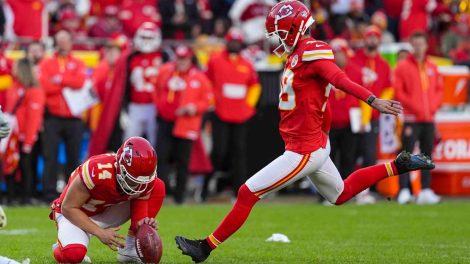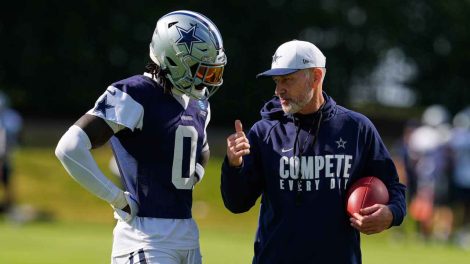As a lifelong New England Patriots diehard, Dr. John Connolly has always appreciated the tactical collision of 300-pound men along a line of scrimmage. He also grew up a fan of boxing, and loves the mix of elite skill and physical power that high-impact sports require. Like many of us, he’s drawn to the thunderous art of physical extremes.
So Connolly the sports fan is admittedly at odds with Connolly the neuroscientist.
A McMaster University professor and the Senator William McMaster Chair in the Cognitive Neuroscience of Language, Connolly is in the unique position of knowing just how damaging the games he loves can be. He saw that damage first hand during a two-year study on the long-term impact of concussions and repeated hits to the head, which included 22 retired CFL players.
“What we saw in the majority of the CFL players we tested was simply shocking,” says Connolly, one of several members of the research team that conducted the study.
The study relied on a series of sophisticated brain-imaging tools and techniques, such as electroencephalography (EEG) and magnetic resonance imaging (MRI). The players’ test results were measured against a control group of 20 participants of similar age who weren’t CFL players.
According to Connolly, it is the “most elaborate study” ever conducted on retired professional football players who are still living. The study was a joint venture between McMaster and the Hamilton Spectator newspaper, which helped organize the former players and published the findings this week.
“I had an expectation that we might see some effects,” Connolly says of the EEG tests he conducted. “What I didn’t expect is what I saw in many of the players, and that was a complete absence of the response [to testing]. It was not a case of a delay: There was nothing to measure.”
[relatedlinks]
As published in the Spectator, the study found a majority of the retired CFL players had a “widespread thinning of the cerebral cortex” and “significant areas of differences in the bundles of nerve fibres that connect various parts of the brain.” The retired players also displayed “a 10-fold increase of memory-related symptoms and a four-times increase in depression symptoms.”
At the same time, some of the players tested produced results similar to those of the control group, Connolly says. Why some people are more prone to the specific effects of brain injuries than others remains a mystery.
The study’s findings add to a growing pile of evidence regarding the long-term effects of concussions on athletes in contact sports. Connolly points to the work done by Boston University’s Chronic Traumatic Encephalopathy (CTE) Centre, which conducts innovative research on the brains of deceased athletes.
Meanwhile, renowned Canadian neuroscientist Charles Tator and his team have challenged the established link between concussions and CTE, suggesting that much of the work in the field has relied on biased samples because the people who donated their brains had reason to believe they had CTE.
But the McMaster study differs in that it has published findings from studies on former players who are still alive, Connolly says.
“We have, in terms of functional brain measures, done more than anybody has ever done before in these sorts of assessments of professional athletes,” he says.
Further studies are ongoing. And the futures of some sports leagues — not to mention billions of dollars — are at stake as the people behind those studies try to unravel the considerable mysteries of the brain.
Last year, the NFL agreed to pay out more than $1 billion to former players and their families for brain injuries sustained during their football careers.
The CFL is facing a class-action suit involving more than 200 players — and a separate suit from Arland Bruce III — who claim the league was negligent in relation to brain injuries. They are seeking more than $200 million in damages. If the suit succeeds, the massive financial fallout could very well jeopardize the viability of the league.
Meanwhile, in October a judge will hear arguments over whether a case involving a slew of former NHL players against the league will be granted class-action certification in a case alleging the league didn’t do enough to ensure player safety. If the court agrees, up to 5,000 NHL alumni will instantly become plaintiffs against the league, unless they choose to opt out.
All of these leagues have already attempted to implement rule changes or revise equipment regulations to mitigate the possibility of injury, but it’s impossible to completely eliminate risk from the game. The question for retired athletes is what they could have and should have known about the risks they faced in their playing days.
Some fans on the sidelines are dismissive, suggesting that players should have known what they signed up for. But that ignores the culture of sport that persisted for decades, as players were encouraged to keep playing after taking hard contact to the head or being knocked unconscious. “Playing through it” has long been seen as a show of grit necessary for glory.
Thankfully, that sentiment is finally shifting.
But for the 22 former CFL players who came through Connolly’s clinic, the long-term implications of their football careers weren’t entirely clear when they were playing.
“I can speak as someone of that generation,” says Connolly, who has been studying the brain for nearly four decades. “Nobody understood it. You got a ‘ding,’ [and] that’s what it was. You felt badly for the guy that was throwing up, but you were grateful that he was going back in there to play…. There really wasn’t the recognition that it was as serious as it is. Because it is serious.
“Repeated blows to the head are related — not uniformly, not 100 per cent, we don’t know the percentages yet — but, in what looks to a be sizeable percentage of people who do enough of this, it leads to neurodegenerative conditions later in life.”
Connolly the Patriots fan doesn’t want to see the demise of the sports he loves. But the neuroscientist in him knows that changes still need to come.
“There are things that can be done, but I certainly don’t want to see these games hurt. These are great spectacle sports,” he says. “I just think that people need to know what’s involved in it. And I think that’s what’s been a black hole.”








